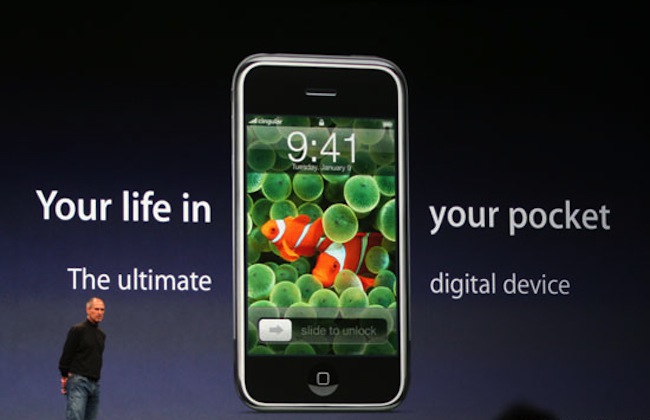The Story Behind the Original iPhone Development

Fast Company just published a truly fascinating article on the story behind the development of the original iPhone. After having spoke with several former executives and engineers at Apple, they were able to paint a picture of what went into creating the iPhone. It’s pretty crazy. I recommend you read the entire piece, but here are a few of my favorite excerpts.
When Apple’s engineers first began developing the iPhone, it was far from the slim, polished device that it is today. In fact, it didn’t resemble a phone at all. “It was a tablet-size device, with this thick cable running into a Mac,” recalls Nitin Ganatra, Apple’s former director of engineering for iOS applications. “Shoved into the corner of this display was the phone interface.”
The first set of prototypes created were actually more for the iPad than the iPhone, something we had previously heard. It wasn’t until Apple realized that an iPad in the current market wouldn’t be good enough according to Apple’s standards that they really put all the company’s efforts into a smaller version of what they were working on, which turned out to be the iPhone.
Apple execs held many meetings discussing all different types of things they thought would be extremely cool and useful, one of the highlighted ones in the Fast Company article is multi-touch, a feature that is still a crucial part of the iPhone today.
Wouldn’t it be great if you could just turn a page like you were turning a page? Wouldn’t it be great if you could just zoom in and out by doing some kind of gesture? A couple of weeks later, we were all just blown away by the prototype Duncan and his team built. It was a multi-touch layer on top of a screen laying on a table and attached to a tower.”
In 2005, the creator of the iPod started experimenting with an iPhone design. “We started with an iPod Mini and tried to make it a phone,” recalls Tony Fadell, Apple’s former senior VP of its iPod division. “We actually built a phone with a click wheel–it worked like a rotary dial.” While Fadell worked on the iPod-like iPhone, Scott Forstall, yes, the one who is no longer working at Apple, created a touch screen version, which obviously won over Steve Jobs.
When it came to developing for the iPhone, the engineers involved didn’t even have access to a working device, all development work had to be done on old Mac computers, in fact, they used a PowerMac G3 for most of the development. When it came to the innovative user interface, only a select few had access to the real deal according to the article.
“We ended up making two user interfaces,” recalls Grignon [top iPhone manager]. “There was the UI that you got if you were knighted by Steve to see these glorious pixels cause they’ll blow your fucking eyes out. And then there was this other UI that we called Skankphone for testing. It was this awful UI that allowed you to make phone calls and text, but it was these hideous red buttons and boxes.”
It didn’t stop there either. There were a ton of other obstacles for engineers without top access, but somehow Apple managed to pull it off. Makes you wonder what it’s like today and what kind of security and secrecy measures were put in place for iOS 7. Nonetheless, I definitely recommend heading over to the complete article at Fast Company.